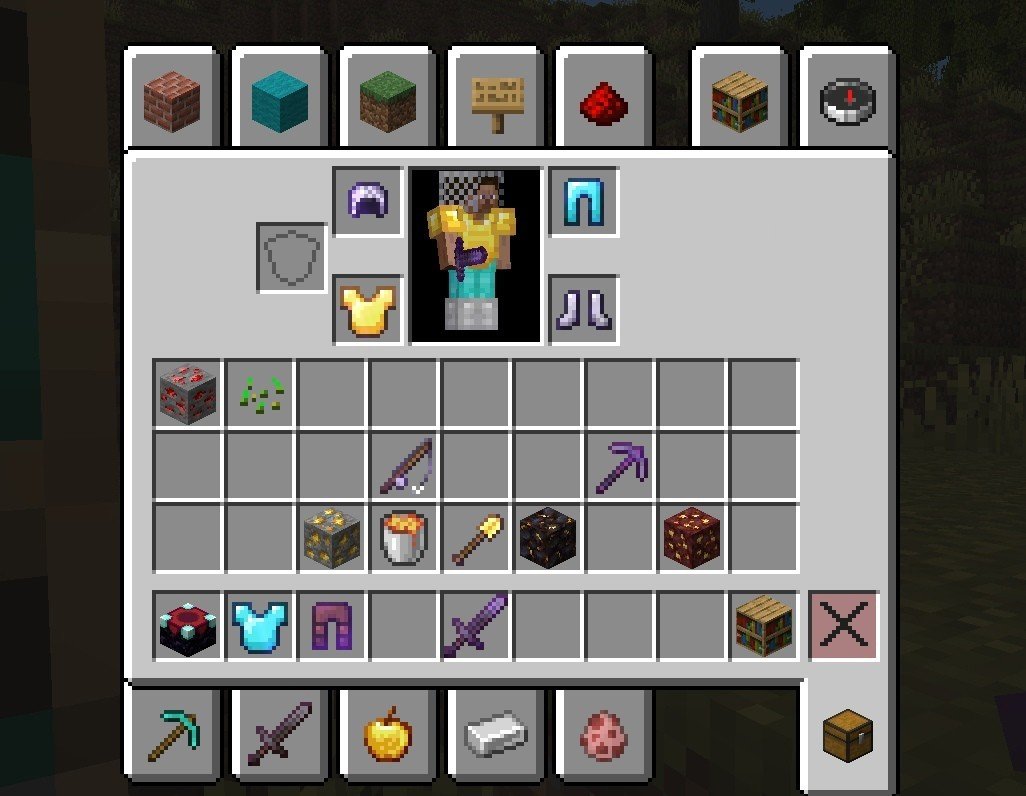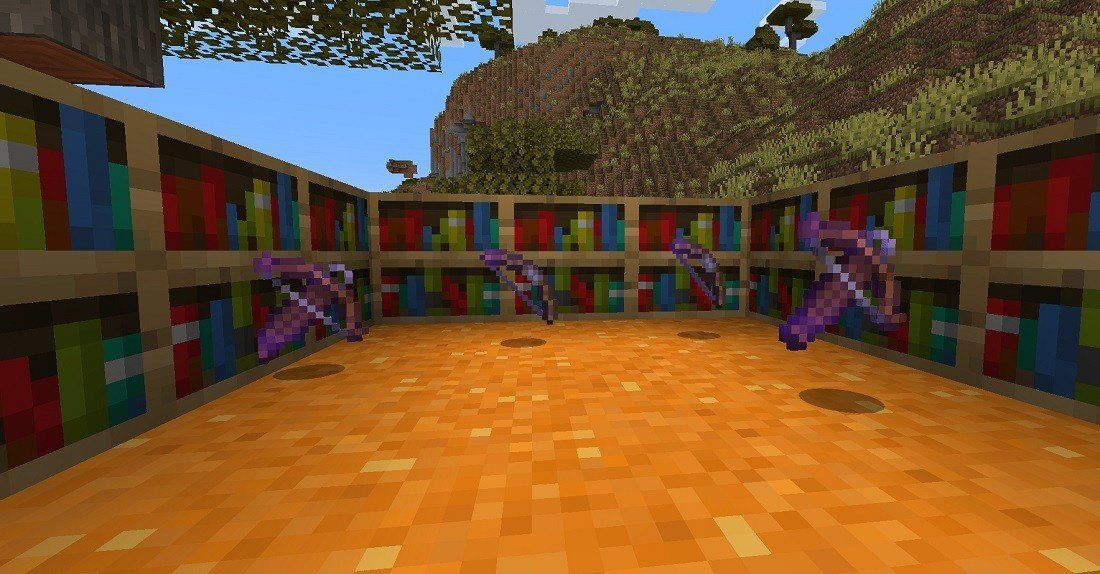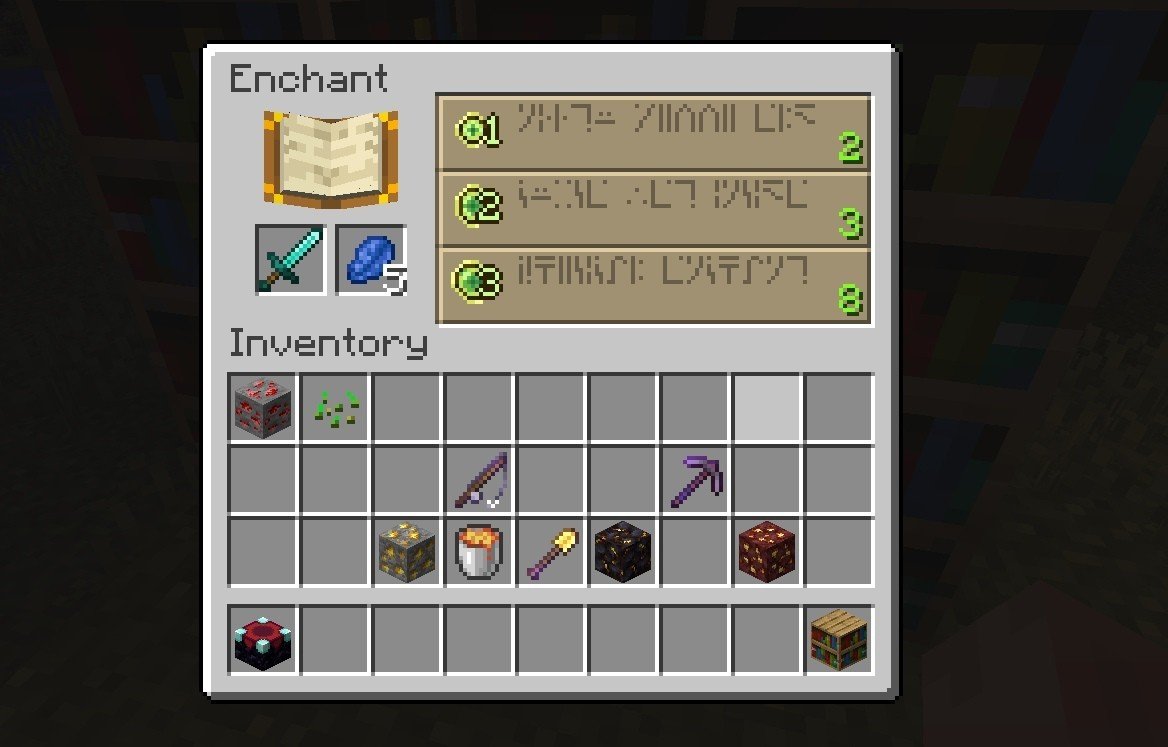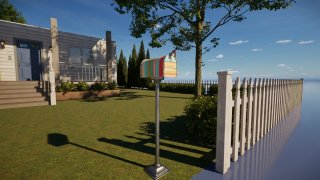Whatever you do in the cubic world, at some point, you'll want to handle tasks more efficiently. That's where Minecraft enchantments come in. They allow the character to become better in almost any area — whether it's combat or resource gathering!
What enchantments are there?
 Image: Ensigame
Image: Ensigame
Some enchantments can only be applied to specific items due to the nature of their properties. Below, we'll discuss all the enchantments and, for convenience, we'll group them accordingly.
Universal
 Image: Ensigame
Image: Ensigame
These can be applied to any armor, tools, or weapons.
🔹 Unbreaking — increases the durability of an item.
🔹 Curse of Vanishing — a curse that destroys the item upon the character's death.
For armor
 Image: Ensigame
Image: Ensigame
🔸 Blast Protection — reduces damage from explosions.
🔸 Curse of Binding — a curse that prevents armor from being removed once worn. It can only disappear if it breaks or is dropped upon the character's death.
🔸 Depth Strider — increases movement speed underwater.
🔸 Feather Falling — reduces fall damage.
🔸 Fire Protection — reduces fire damage and burn time.
 Image: Ensigame
Image: Ensigame
⭐️ Projectile Protection — reduces damage from projectiles.
⭐️ Protection — reduces most types of damage by 4% per level of enchantment.
⭐️ Respiration — increases underwater breathing time.
⭐️ Soul Speed — increases walking speed on soul sand and soul soil.
⭐️ Thorns — when the character takes damage, the attacker receives damage.
⭐️ Swift Sneak — increases the player's movement speed while sneaking.
For melee weapons
 Image: Ensigame
Image: Ensigame
🔅 Efficiency — increases resource gathering speed. Each tool will break blocks faster, depending on its intended use.
🔅 Looting — increases the amount of loot dropped by mobs.
 Image: Ensigame
Image: Ensigame
🔅 Knockback — causes enemies to be pushed back when hit with a weapon.
🔅 Sharpness — increases the weapon's damage.
🔅 Smite — increases damage dealt to undead mobs.
🔅 Sweeping Edge — enhances sweeping attacks. Available only in Java Edition.
For ranged weapons
 Image: Ensigame
Image: Ensigame
🔹 Flame — ignites targets hit by arrows.
🔹 Impaling — the trident deals extra damage to aquatic mobs.
🔹 Infinity — arrows are not consumed when shooting. One arrow is enough to shoot indefinitely.
🔹 Loyalty — the trident returns to the player after being thrown. Higher levels reduce the return time.
 Image: Ensigame
Image: Ensigame
🔸 Multishot — allows the crossbow to shoot 3 arrows for the cost of one.
🔸 Piercing — arrows penetrate multiple entities.
🔸 Power — increases arrow damage.
🔸 Punch — increases arrow knockback.
🔸 Quick Charge — reduces the crossbow's reload time.
For tools
 Image: Ensigame
Image: Ensigame
⭐️ Fortune — increases the chances of certain items dropping from blocks.
⭐️ Luck of the Sea — increases the chance of catching rare items (such as enchanted books) while fishing.
⭐️ Lure — reduces the time it takes for fish, junk, or treasures to bite.
⭐️ Silk Touch — allows blocks to drop themselves rather than breaking into other items.
How to apply enchantments in Minecraft?
 Image: Ensigame
Image: Ensigame
There are several ways to apply enchantments to an item. The most common method is using an enchanting table. You'll need as much experience as possible, lapis lazuli, and the item you want to enhance with new properties. The effect can be further improved by placing bookshelves around the enchanting table.
Let's move on to creating an enchanting table. You'll need 4 obsidian, 2 diamonds, and a book. Arrange them as shown in the image below. To use the table, click on it, then place the lapis lazuli and the item you want to enchant into the corresponding slots. Choose one of the lines written in the cryptic language, and the item will be enchanted.
 Image: Ensigame
Image: Ensigame
It's often best to enchant books first so you can later transfer the enchantments to desired items. This prevents items from receiving unwanted properties.
This brings us to the second method. Place an enchanted book on an anvil along with the item you want to transfer the enchantments to. The book will disappear, and the item will gain its properties. Just like in the first method, this consumes a few levels.
The third method also involves using an anvil and experience. The character can combine two identical items with different enchantments to create one item that carries the enchantments from both.
 Image: Ensigame
Image: Ensigame
The last method to obtain enchantments is by trading with a librarian villager. The character can enchant books in exchange for emeralds.
There are other ways to obtain enchanted items and books, but these are highly dependent on chance and may not be reliable in normal conditions. For example, a player might fish up an enchanted item, but this happens rarely. Often, the items are damaged, and the enchantments may not be useful.
 Image: Ensigame
Image: Ensigame
Enchanting is a complex system in Minecraft, one that can take considerable time to master during gameplay. Players can find the most suitable effects for themselves and work towards achieving the highest level of enchantments on their items. Having enchantments is particularly important in battles against powerful enemies like the Ender Dragon and Wither, as it can significantly ease the combat.
Main image by DALL-E


 Vadim "Vadim" Dybinskiy
Vadim "Vadim" Dybinskiy


















0 comments